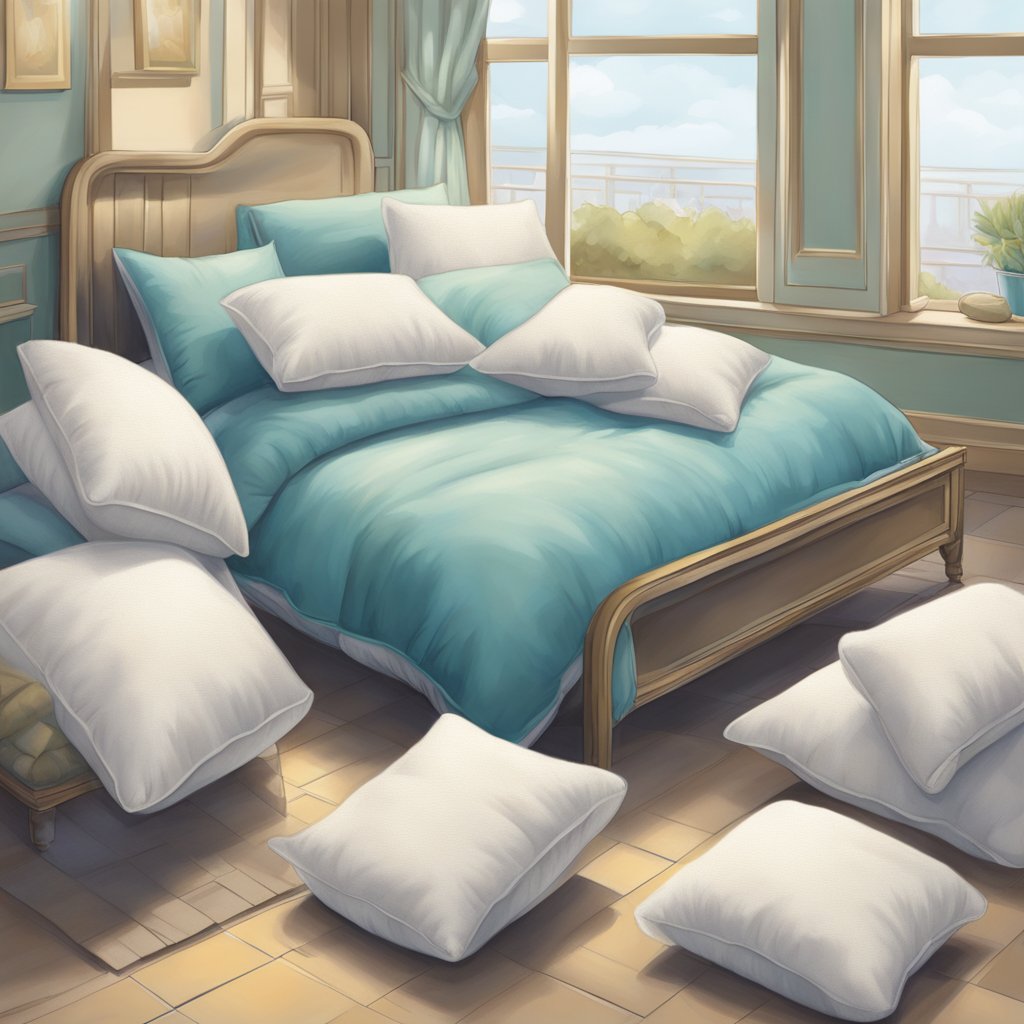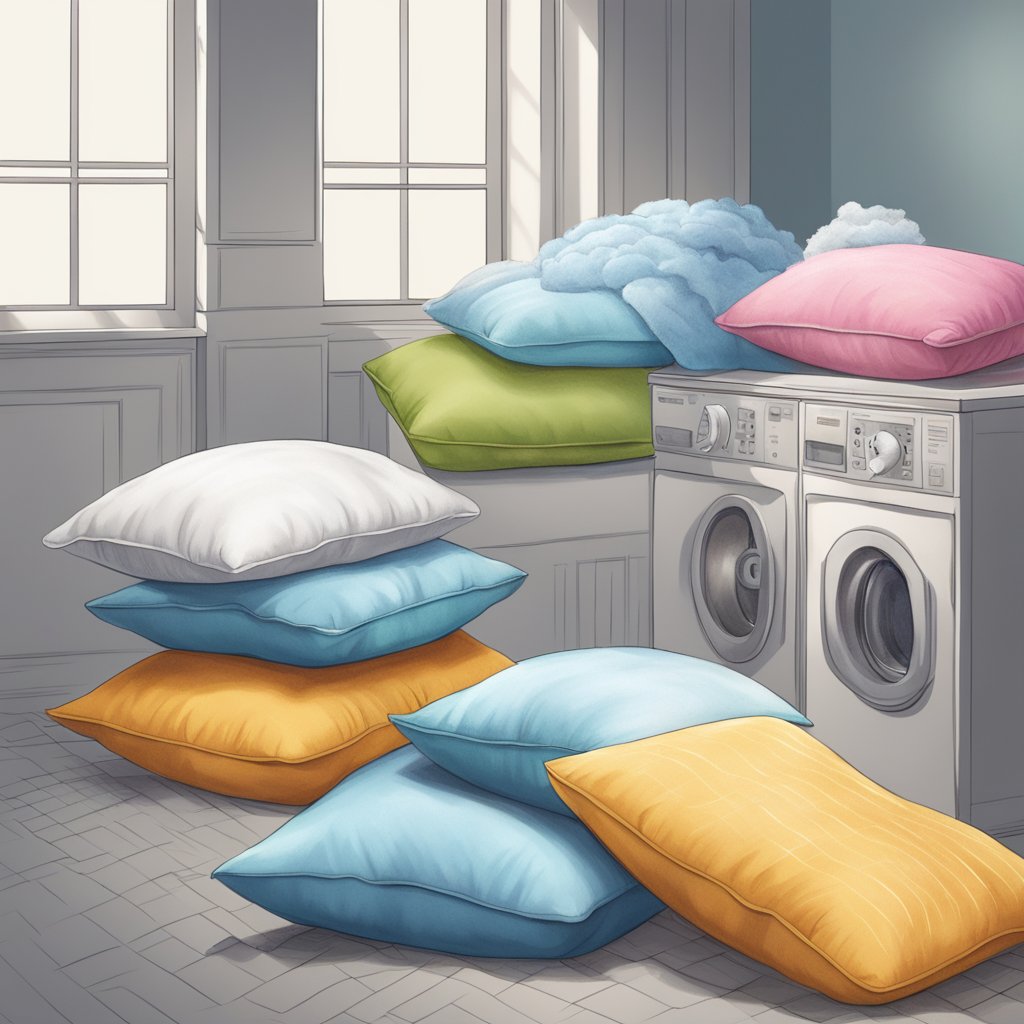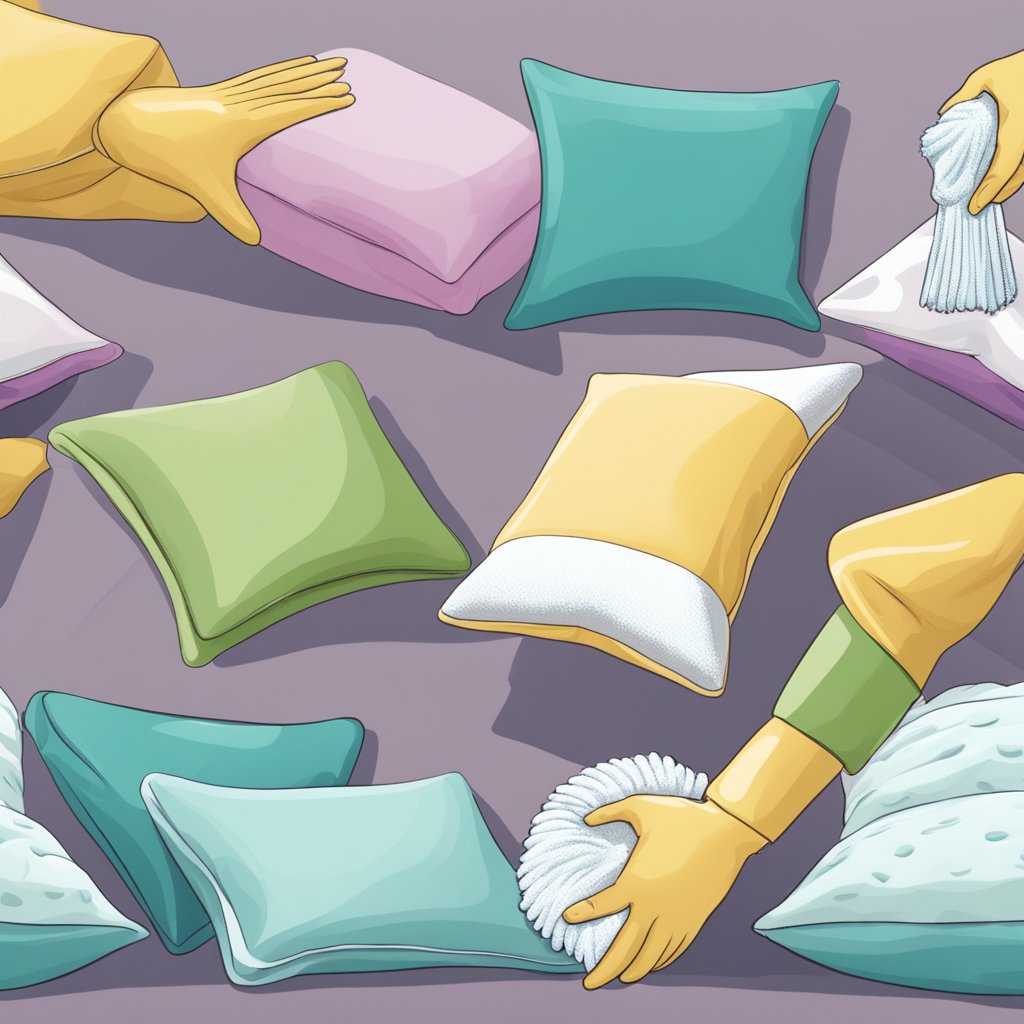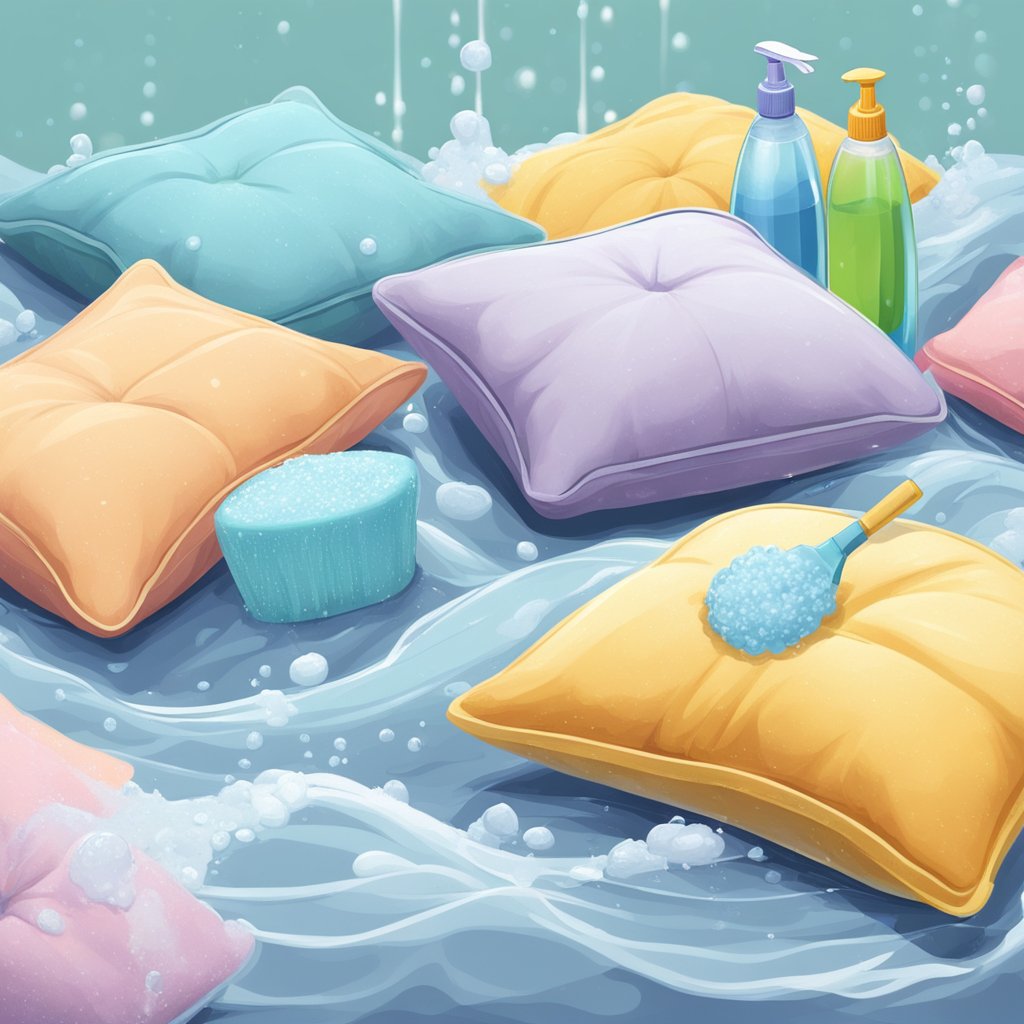8 Tips for EXTENDING the Life of Your Pillows: (Fluffy and Free from Allergens!)
Pillows aren’t just a bedtime luxury; they are crucial for a good night’s sleep, supporting your head and neck, and contributing to your overall comfort. However, over time, pillows can lose their fluffiness and become havens for allergens, affecting both your comfort and health. The good news is, with the right care, the life of your pillows can be significantly extended, ensuring they remain as cozy and allergen-free as the day you bought them.
In this guide, we’ll explore 8 essential tips to help you maintain your pillows. From protecting them from everyday wear and tear to keeping them clean and fluffy, these strategies are simple yet effective. Whether you’re looking to improve your sleep quality or just want to ensure your pillows last as long as possible, these tips will set you on the right path.
Let’s dive into the world of pillow care and discover how to keep them in pristine condition for years to come!
1. Use Pillow Protectors
What are Pillow Protectors?
Pillow protectors are removable coverings that go over your pillow and under your pillowcase. They serve as a barrier against various contaminants.
Shielding Pillows from Dust, Sweat, and Oils
Our bodies naturally shed skin cells, sweat, and oils during sleep, and these can seep into the pillow, fostering bacteria and dust mites. Here’s how pillow protectors help:
- Barrier against moisture and oils: Protectors prevent sweat and natural oils from your skin from penetrating into the pillow, thus maintaining its cleanliness.
- Protection from dust and dander: Dust and pet dander, common allergens, are blocked by the protective layer, reducing allergic reactions.
- Ease of cleaning: Pillow protectors can be easily removed and washed, making it simpler to keep your sleeping environment clean and hygienic.
Choosing the Right Protector
When selecting pillow protectors, consider the following:
- Material: Opt for breathable materials like cotton or bamboo. Waterproof options are also available for those who need extra protection against moisture.
- Closure type: Look for protectors with zippers, which offer more complete coverage than those with envelope or flap closures.
- Size and fit: Ensure the protector fits snugly on your pillow. A loose protector can lead to uncomfortable bunching.
Using pillow protectors is a simple yet effective first step towards prolonging the life of your pillows and keeping them free from allergens.

2. Regular Washing
Frequency of Washing
Pillows should ideally be washed every three to six months to remove accumulated dust, skin cells, and potential allergens. However, the frequency can vary depending on individual circumstances, such as allergies or pets in the bed.
Washing Different Types of Pillows
Different materials require different care. Here’s how to handle various types:
- Down and Feather Pillows: These can usually be machine washed. Use a gentle cycle with warm water and a small amount of mild detergent. It’s best to wash two pillows at a time to keep the machine balanced.
- Synthetic Pillows (polyester, etc.): These are also machine washable. Use warm water and choose the gentle cycle. Be cautious with the amount of detergent to avoid residue.
- Foam Pillows: Foam pillows should not be put in the washing machine as this can break down the foam. Instead, spot clean with a mild detergent and let them air dry completely.
Tips for Washing
- Check labels: Always read the care labels on your pillows for specific instructions.
- Gentle detergent: Use a mild detergent to prevent damage to the pillow materials.
- Dissolve detergent: If using a top-loading machine, let the detergent dissolve in the water before adding pillows. This helps prevent detergent spots.
Regular washing, tailored to the type of pillow you own, is key to removing allergens and keeping your pillows fresh and clean.

3. Correct Drying Techniques
Thorough Drying to Prevent Mold and Dust Mites
After washing, ensuring your pillows are completely dry is crucial. Dampness can lead to mold growth and attract dust mites, both of which are harmful to your health.
Best Practices for Drying Pillows
- Air Drying: The safest method for all types of pillows. Place them in an area with good air circulation, and flip them occasionally for even drying. If weather permits, drying them outside can add freshness.
- Machine Drying: For those that are machine-safe, use a low heat setting. Adding a couple of clean tennis balls or dryer balls can help fluff the pillows as they dry.
- Check for Dampness: Before putting pillows back on the bed, ensure they are completely dry. Any lingering dampness can lead to problems down the line.
- Foam Pillows: Since these shouldn’t be machine washed, they generally don’t require drying. However, if they get damp, air drying is the best approach.
Precautions While Drying
- Avoid High Heat: Excessive heat can damage pillow fibers, especially in synthetic or foam pillows, making them hard or lumpy.
- Frequent Fluffing: During the drying process, fluff the pillows several times. This helps retain their shape and ensures even drying.
Proper drying is as important as washing. It ensures your pillows stay fluffy and free from harmful molds or allergens.

4. Fluffing Daily
Maintaining Pillow Shape and Comfort
Daily fluffing helps maintain the structure and comfort of your pillows. It redistributes the filling evenly, preventing it from becoming lumpy or flat.
Techniques for Fluffing Different Pillow Types
- Down and Feather Pillows: These can be fluffed by hand. Gently shake and push the ends towards the center.
- Synthetic Pillows: These may require more vigorous shaking. Fluff them up on both sides to keep the filling distributed evenly.
- Foam Pillows: Since they don’t have loose filling, gently shake and pat them to maintain shape. For contoured foam pillows, it’s more about ensuring they retain their ergonomic shape.
Benefits of Regular Fluffing
- Comfort: Regular fluffing helps your pillows provide consistent support each night.
- Air Circulation: Fluffing introduces air into the pillow, keeping it fresher and reducing the accumulation of moisture and allergens.
- Longevity: Pillows that are regularly fluffed tend to hold their shape and function longer, delaying the need for replacement.
Incorporating pillow fluffing into your daily routine is a simple yet effective way to enhance your sleep experience and extend the life of your pillows.

5. Rotating and Flipping
Benefits of Regular Rotation and Flipping
Rotating and flipping your pillows helps them wear evenly, which is essential for maintaining their shape and comfort over time.
Frequency and Technique for Optimal Results
- Rotation: Rotate your pillows once a week. If you have a set of pillows, switch their positions on the bed, as most people tend to sleep on one side more than the other.
- Flipping: Flip your pillows over with each rotation. This ensures that both sides of the pillow receive equal use and maintain a consistent shape.
Additional Tips
- Seasonal Rotation: Consider rotating pillows between rooms or beds seasonally. This can be especially useful in a household with different types of pillows.
- Combining with Fluffing: Combine rotation and flipping with your daily fluffing routine for maximum benefit.
- Observing Wear and Tear: Pay attention to how your pillows respond to rotation and flipping. If they no longer return to their original shape or comfort level, it may be time to replace them.
Rotating and flipping your pillows regularly is a straightforward practice that can significantly contribute to their longevity and ensure consistent comfort night after night.
6. Sunning Your Pillows
Advantages of Exposing Pillows to Sunlight
Sunning your pillows has multiple benefits. It can help kill bacteria and dust mites, wick away moisture, and naturally freshen them.
Instructions on How to Sun Pillows Safely
- Frequency: Aim to sun your pillows once every couple of months, weather permitting.
- Duration: A few hours of sunlight is usually sufficient. Avoid leaving them out all day to prevent fabric damage.
- Protection: If your pillows have colored covers, consider placing them in indirect sunlight or using a white sheet over them to prevent color fading.
Precautions While Sunning Pillows
- Avoiding Damp Conditions: Ensure your pillows are completely dry before sunning them. Moisture can lead to mold growth, especially in warm conditions.
- Foam Pillows Caution: Foam pillows can be sunned but keep an eye on them as excessive heat can damage some types of foam.
Sunning your pillows is an effective, natural way to refresh them and eliminate potential allergens. It’s an easy step to incorporate into your pillow maintenance routine for fresher, cleaner bedding.

7. Immediate Stain Treatment
Importance of Prompt Stain Removal
Treating stains immediately can prevent them from setting in, making them easier to remove and preserving the appearance and integrity of your pillows.
Effective Stain Removal Strategies
- Blot, Don’t Rub: Gently blot any spills or stains with a clean cloth. Rubbing can push the stain deeper into the fabric.
- Appropriate Cleaners: Use a stain remover suitable for the pillow’s fabric. For natural fibers, a mild detergent can work, while enzyme-based cleaners are good for protein-based stains like blood or sweat.
- Spot Cleaning: Apply the cleaner directly to the stain and gently work it in. Rinse thoroughly to remove any residue.
Additional Tips for Tough Stains
- Soaking: For persistent stains, consider soaking the stained area in a mild detergent solution before washing.
- Avoid Bleach: Bleach can weaken fibers and damage pillow fabric, especially on down or feather pillows. It’s best to use gentler alternatives.
Prompt and appropriate stain treatment not only keeps your pillows looking good but also extends their life by preventing permanent damage to the fabric.

8. Replacing When Necessary
Recognizing When It’s Time for a New Pillow
Even with the best care, pillows have a lifespan. Knowing when to replace them is essential for maintaining good sleep hygiene.
Signs That Your Pillow Needs Replacing
- Loss of Shape: If your pillow no longer springs back into shape after fluffing or feels lumpy, it’s probably time for a replacement.
- Discomfort: If you’re waking up with neck pain or not sleeping as well, your pillow may not be providing the necessary support.
- Persistent Odors: Odors that don’t go away after washing can be a sign of mold or bacteria buildup.
- Visible Stains and Wear: Over time, pillows can develop stains and wear that can’t be removed or repaired.
Considerations for Replacement
- Lifespan: The average lifespan of a pillow is 1-2 years for synthetic and 2-3 years for down or feather. Foam pillows may last longer if well-maintained.
- Allergies: Those with allergies might need to replace pillows more frequently to ensure a clean sleeping environment.
- Upgrading for Comfort: Advances in pillow technology and materials mean that newer pillows might offer better support and comfort.
Regularly assessing your pillows and recognizing when they need to be replaced is crucial for ensuring optimal sleep quality and maintaining a healthy sleeping environment.
Let Us Know How We’re Doing!
Did this expertly prepared resource answer your question?
Do you have another question about home maintenance, home improvement projects, home appliance repair, or something else?
Get more information, send in questions and keep the discussion going by contacting the I’ll Just Fix It Myself company customer service team at at 1-800-928-1490 or Email us at [email protected]
